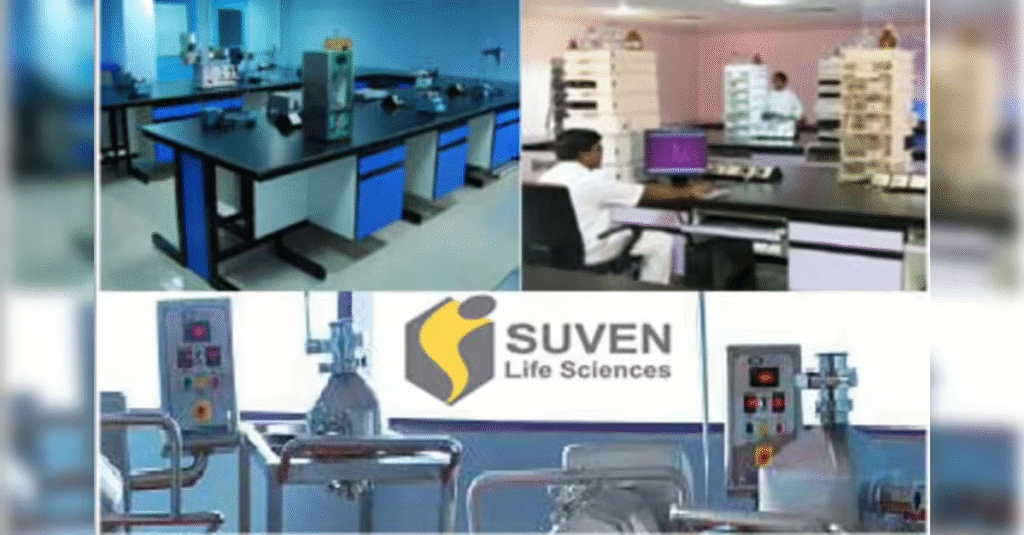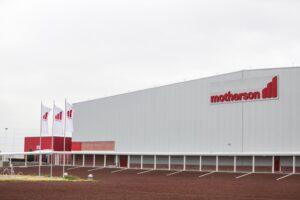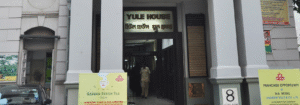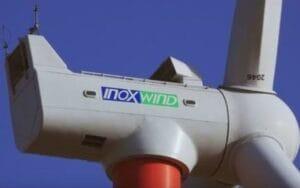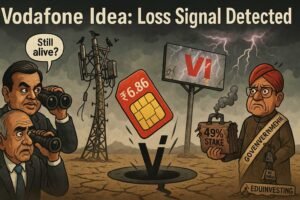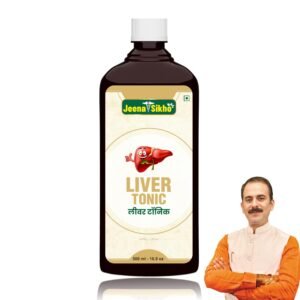1. At a Glance
Suven Life Sciences isn’t just burning cash — it’s holding an Olympic torch relay with it. Q1 FY26 revenue was a microscopic ₹2 Cr (yes, crores, not hundreds), against a loss of ₹51 Cr. Their pipeline targets Alzheimer’s, dementia, narcolepsy — and possibly their own investor patience. Still, in the land of biotech moonshots, the market’s happy to value them at ₹5,000 Cr, proving hope molecules can be as addictive as any prescription drug.
2. Introduction
Imagine a company whose primary product isn’t pills butpossibility. Suven’s molecules are still running the pharmaceutical equivalent of marathons in slow motion — Phase 2, Phase 3, regulatory hoops — while their income statement runs a sprint to the red.They’re in CNS (central nervous system) therapeutics — one of pharma’s toughest, riskiest, and potentially most rewarding spaces. It’s like betting on a cricket match where the pitch hasn’t even been built yet.
3. Business Model (WTF Do They Even Do?)
- Core Focus: Drug discovery for neurodegenerative diseases — Alzheimer’s, dementia, amnesia, narcolepsy.
- Stage: Clinical-phase; no commercial blockbuster yet.
- Revenue Source: Minimal — occasional contract research or licensing income.
- Cost Structure: Heavy R&D burn, low operating income, long timelines.
- Moat: Intellectual property and molecule portfolio — intangible, high-risk, high-reward.
Think of it as a biotech startup with 15+ years of patience, multiple lab coats, and a P&L that screams “venture capital mode” despite being a listed entity.
4. Financials Overview
| Metric | Q1 FY26 | Q1 FY25 | Q4 FY25 | YoY % | QoQ % |
|---|---|---|---|---|---|
| Revenue (₹ Cr) | 2.0 | 1.0 | 1.0 | 100.0% | 100.0% |
| EBITDA (₹ Cr) | -51.0 | -31.0 | -44.0 | -64.5% | -15.9% |
| PAT (₹ Cr) | -51.5 | -28.0 | -44.0 | -83.9% | -17.0% |
| EPS (₹) | -2.36 | -1.29 | -2.01 | -82.9% | -17.4% |
Commentary:Yes, revenue doubled — but when you go from ₹1 Cr to ₹2 Cr, it’s more rounding error than turnaround. Losses widened sharply YoY, confirming the burn is part of the business model until a drug hits the market.
5. Valuation (Fair Value RANGE only)
Method 1: P/E– Not meaningful (negative EPS).
Method 2: Price-to-Book
- Book Value = ₹5.04/share
- PBV peer range for research biotechs: 3–8×
- FV = ₹15 – ₹40
Method 3: Probability-Adjusted DCF
- Assume ₹2,000 Cr peak sales for one lead molecule with 10% success probability.
- NPV after discounting = ₹1,200 – ₹1,800 Cr market cap equivalent → ₹55 – ₹85/share.
Educational FV Range:₹15 – ₹85This FV range is for educational purposes only and is not investment advice.






